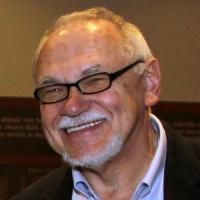Efects of mineral suspension and dissolution on strength and compressibility of soft carbonate rocks
Date
2015-01-04
Journal Title
Journal ISSN
Volume Title
Repository Usage Stats
views
downloads
Citation Stats
Attention Stats
Abstract
© 2014 Elsevier B.V.Calcarenites are highly porous soft rocks formed of mainly carbonate grains bonded together by calcite bridges. The above characteristics make them prone to water-induced weathering, frequently featuring large caverns and inland natural underground cavities. This study is aimed to determine the main physical processes at the base of the short- and long-term weakening experienced by these rocks when interacting with water. We present the results of microscale experimental investigations performed on calcarenites from four different sites in Southern Italy. SEM, thin sections, X-ray CT observations and related analyses are used for both the interpretation-definition of the structure changes, and the identification-quantification of the degradation mechanisms. Two distinct types of bonding have been identified within the rock: temporary bonding (TB) and persistent bonding (PB). The diverse mechanisms linked to these two types of bonding explain both the observed fast decrease in rock strength when water fills the pores (short-term effect of water), identified with a short-term debonding (STD), and a long-term weakening of the material, when the latter is persistently kept in water-saturated conditions (long-term effect of water), identified with a long-term debonding (LTD). To highlight the micro-hydro-chemo-mechanical processes of formation and annihilation of the TB bonds and their role in the evolution of the mechanical strength of the material, mechanical tests on samples prepared by drying partially saturated calcarenite powder, or a mix of glass ballotini and calcarenite powder were conducted. The long-term debonding processes have also been investigated, using acid solutions in order to accelerate the reaction rates. This paper attempts to identify and quantify differences between the two types of bonds and the relative micro-scale debonding processes leading to the macro-scale material weakening mechanisms.
Type
Department
Description
Provenance
Subjects
Citation
Permalink
Published Version (Please cite this version)
Publication Info
Ciantia, MO, R Castellanza, GB Crosta and T Hueckel (2015). Efects of mineral suspension and dissolution on strength and compressibility of soft carbonate rocks. Engineering Geology, 184. pp. 1–18. 10.1016/j.enggeo.2014.10.024 Retrieved from https://hdl.handle.net/10161/10758.
This is constructed from limited available data and may be imprecise. To cite this article, please review & use the official citation provided by the journal.
Collections
Scholars@Duke

Tomasz Hueckel
Tomasz Hueckel received his master's degree in civil engineering from the University of Technology in Gdansk, Poland, in 1968, his Ph.D. in applied mechanics from the Polish Academy of Sciences in Warsaw, in 1974, and the D.Sc. in physical sciences from the University of Grenoble, France, in 1985. He started his research career at the Polish Academy of Sciences in Warsaw, then taught at the University of Rome and the University of Technology in Milan before joining ISMES, a research institute in Bergamo, Italy, where he was responsible for research on geomechanical aspects of nuclear waste disposal in clays, a subject in which he continues to be strongly involved. He came to Duke in 1987.
Dr. Hueckel's research interest is in theoretical soil mechanics, rock mechanics, and environmental geomechanics, as well as in theory of plasticity. His current projects deal with thermo-plasticity and chemo-plasticity of clays, and in general in mechanics of materials composed of chemically reacting solids and liquids. He is interested in fundamental aspects of soil drying and cracking, and processes of soil aging and healing. The above subjects involve mathematical modeling and model driven laboratory experiments. He also is interested in basic aspects of theory of plasticity, such as stability and localization. His research is applied to hydraulic geo-barriers affected either by chemically hazardous liquids or nuclear waste heat, to prediction of petroleum production induced compaction and subsidence, as well as desiccation damage.
Dr. Hueckel is a co-founder and co-Editor-in Chief (2015) of Geomechanics for Energy and the Environment, an Elsevier journal. He has published also in International Journal of Solids and Structures, International Journal of Engineering Science, Pure and Applied Geophysics, Surveys in Geophysics, Engineering Geology, Engineering Fracture Mechanics, International Journal of Rock Mechanics and Mining Engineering, International Journal of Numerical and Analytical Methods in Geomechanics, Computers and Geotechnics, International Journal of Soils and Foundations, Journal de Mecanique, Canadian Geotechnical Journal, Meccanica, Ingenieur- Archiv, and the ASCE Journal of Geotechnical Engineering. He has also contributed to numerous books on the state of the art. Dr. Hueckel is heavily involved in international research cooperation, collaborating and co-authoring with Belgian, Italian, French, Polish, Spanish and Swiss researchers. He is or was a member of the editorial board of the Journal of Numerical and Analytical Methods in Geomechanics, the Archive of Applied Mechanics and of the International Journal of Mechanics of Cohesive and Frictional Materials, ASCE Journals of Geotechnical and Geoenvironmental Engineering and ASCE International Journal of Geomechanics, Italian Geotechnical Journal and Studia Geotechnica et Mechanica (Polish).
Unless otherwise indicated, scholarly articles published by Duke faculty members are made available here with a CC-BY-NC (Creative Commons Attribution Non-Commercial) license, as enabled by the Duke Open Access Policy. If you wish to use the materials in ways not already permitted under CC-BY-NC, please consult the copyright owner. Other materials are made available here through the author’s grant of a non-exclusive license to make their work openly accessible.
